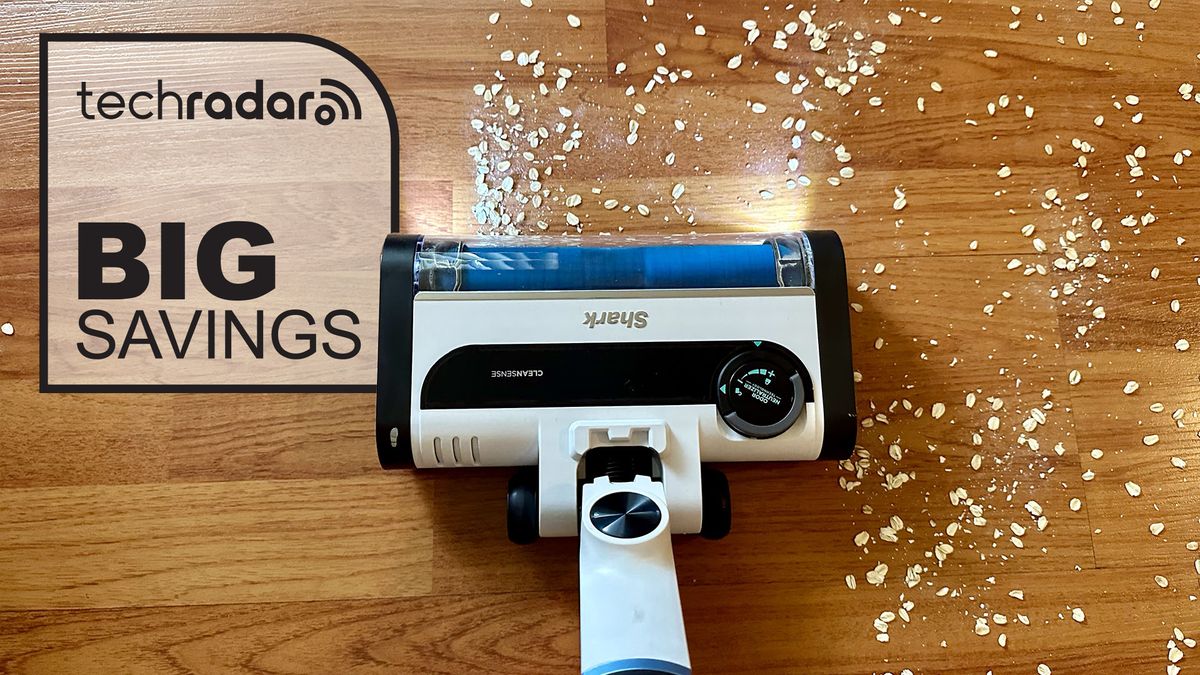Apple AirTags revolutionized the ability to monitor your belongings almost anywhere in the world using the expansive Find My network on iPhones. The genius of the network is that even if your iPhone isn't in range of the AirTag, it's very likely that someone else's device can spot it instead. You can also mark a lost item to receive a notification the next time they connect to the network.
The Find My network (and Google's own Find Hub platform) also supports many third-party Bluetooth trackers, so it's never been easier to manage your stuff. (Just remember to keep track of the battery life too.) At home or away, these small yet mighty gadgets are discreet enough to fit most places. Let's explore 15 of the best places to stash an AirTag.
Level 1: Day-to-day gear
1. Watch over your wallet
Wallets with Bluetooth tracker slots are incredibly common.
John Carlsen/CNETForgetting your wallet or purse at home while running errands can easily derail an entire day. Or worst case, having it fall out of your pocket -- especially if you need to replace IDs, cancel credit cards or lament over that full punch card for a free meal at your favorite restaurant. Fortunately, you can find various AirTag-compatible wallets or thin Bluetooth trackers that fit next to your credit cards.
2. Keep your car keys on your radar
While AirTag doesn't come with a keychain, trackers like Tile often include a keyring.
John Carlsen/CNETAirTags make for excellent vehicle locators and are just as handy for car keys. If you've ever needed to replace modern car keys and fobs, you know that it's not always as simple or cheap as popping down to the locksmith shop for a new key. Save your sanity by clipping a tracker on your keychain. This is especially helpful for people like me, who misplace keys randomly around the house.
3. Track that jacket
Your iPhone can tell you how close an AirTag is.
Sarah Tew/CNETHow often have you left your coat behind in a restaurant, bar or friend's house? Forgetting to grab your jacket when you head out is easy to do, especially if the weather is warmer than expected or your hands are full of leftovers and to-go cups. If you typically hang your jacket on a coat rack or the back of a chair, place an AirTag inside the pocket so you can easily locate it. This can help prevent you from losing a favorite jacket.
4. Stay on top of your laptop bag
Place an AirTag inside your laptop bag so you stop leaving it at the coffee shop.
Sarah Tew/CNETMisplacing a laptop bag is practically an Olympic sport for some folks, especially if you work from a cafe over lunch. That's why it's a good idea to place an Apple AirTag inside one of the pockets. You will be able to locate your expensive laptop and save any confidential company or personal information in your bag. Naturally, this extends to tablets, Nintendo Switch 2, Steam Deck and other portable tech.
5. Get updates about your umbrella
Don't get caught in the rain without an umbrella, which has in this case.
John Carlsen/CNETIf you're prone to leaving your umbrella behind at businesses or on public transit, a Bluetooth tracker can help you remember to circle back. While it's debatable whether a relatively cheap umbrella actually needs an AirTag that costs more than it does, some people might appreciate not having to replace a constant stream of lost umbrellas.
6. Be aware of your bicycle
Avoid stolen bike heartbreak with the use of a GPS tracker.
GettyIf it hasn't happened to you, you probably know someone who has had this experience: You get home from a bike ride, go inside to grab water and something to eat, and completely forget about the bicycle outside. Or maybe it disappeared while you were at the store? By hiding an AirTag on your bike, you can easily locate it. However, you should resist the temptation to track down a stolen bicycle on your own. It's best to notify the police and let them retrieve your bike so you can avoid any dangerous situations.
Level 2: Keeping your family organized
7. Designate important documents
Ensure that your passport has its own location tracker for times when you're traveling.
John Carlsen/CNETEvery adult has a slew of important documents like Social Security cards, birth certificates, car titles, marriage licenses and passports that they keep in a safe place at home. That might be a file cabinet, a fireproof lockbox or a heavy-duty safe. Although we can only hope that you won't misplace something so vital, you can make things easier on yourself by chucking an AirTag in the box, bag or folder so you can set off an alarm for quick retrieval -- or get an alert if the tracker moves unexpectedly.
Passport holders with AirTag storage are incredibly easy to come by and can make a significant difference between a stressful lost passport experience and a pleasant travel experience.
8. Chase down your young child's backpack
It's not just backpacks, plenty of children's accessories like shoes, specifically include slots for AirTags.
John Carlsen/CNETPlacing an AirTag in a young child's backpack has two major advantages: safety and organization. On the safety side, an AirTag is a useful option until your child is old enough to use a smartwatch or kid's smartphone. As for organization, nobody likes searching for a child's backpack just before the bus arrives. Now you can quickly discover it at the bottom of the toy chest -- of all places.
9. Supervise your sports equipment
Golf and tennis bags are prime locations, but you can just as easily keep a GPS tracker with your pickleball gear.
John Carlsen/CNETAlmost every sport requires some equipment that's not always easy to replace. While putting an AirTag inside a soccer ball isn't a good idea, it's a sensible addition to whichever bag you use for your equipment. Parents with kids in sports will also appreciate the option to ping the AirTag's chime when leaving the house. This way, your child won't be aimlessly searching for their gear as their game's about to start.
10. Tag the toolbox
By tossing a Bluetooth tracker in the toolbox, you can keep it on deck, even if someone else forgets to put it back after a project.
John Carlsen/CNETWhether you have a small toolbox or a large workshop, an AirTag can help keep your most important tools readily available for quick projects around the house. Unless you're constantly using your tools, it can be easy to stash the toolbox in the back of a closet until the next time you need a hammer to hang a picture or assemble a piece of flat-pack furniture. This is also great for hobbyists and professionals, who might have expensive specialty equipment to monitor -- especially when transporting it between worksites.
11. Manage your medical and mobility equipment
Trackers are particularly important for assistive devices you need while traveling.
John Carlsen/CNETLiving with a medical condition or disability often means using specialized items like CPAP machines, wheelchairs, white canes, prescription clothing and a host of medications. Slapping an AirTag on these crucial items not only keeps them accessible to you but can help caretakers and first responders track them down when you can't.
12. Point to pet supplies
Apple and other tracker makers don't recommend using them on pets, but they're great for pet supplies.
John Carlsen/CNETTracking a pet's location has long been a popular option for Apple AirTag users, so it's only natural to keep tabs on useful pet supplies. For example, you might put a tracker on your pet's leash, a box of favorite chew toys or your backup food supply to help a pet sitter find them while you're on vacation. Just remember to turn off location sharing when you get home. Pet owners will want a dedicated pet tracker for monitoring their pets.
13. Remember the remote
can hold a tracker in place—even if it's not the most elegant solution.
John Carlsen/CNETLosing the remote is such a small thing, but I seem to do it daily. I'll pause for a bathroom break and leave the remote on a bookshelf -- or I'll carry it into the kitchen before making a snack. Or worst of all, I take it upstairs when I need to grab the laundry basket. At least I can usually find it when it's in my pocket. Putting an AirTag on the remote makes it easier to get back to your latest binge.
Level 3: Tag while traveling
14. Lob a tracker inside your luggage
It's a breeze to set up an AirTag, which passively monitors your item until you need to locate it.
Sarah Tew/CNETAirports are tricky to navigate, and especially difficult when you're trying to find the correct luggage pickup. Sometimes you wait 30 minutes until your bags finally roll out on the conveyor belt, and sometimes they get lost. To relieve the stress of trying to locate your suitcase, you can put an AirTag tracker inside so you can track its whereabouts.
This can help you determine if your bag's still on the airplane, on the conveyor belt, or if someone has mistakenly grabbed your luggage. Don't worry, AirTags are TSA-approved, so there shouldn't be any issues with placing them in your luggage.
15. Complement your campsite
Use the Find My feature to look up the AirTag's last location (your tent) and get directions back to a campsite.
Aly Lopez/CNETIf you're camping somewhere new, place an AirTag inside your tent to easily find your campsite. For instance, you can use Find My to locate the AirTag's last position (your tent) and get directions back to the campsite. Remember, it must be within range of someone else's device -- and you need a data connection -- so don't rely on this out in the wilderness. For serious wilderness excursions, you'll want something with GPS.
Whether you're traveling or simply need to locate specific items, AirTags and Bluetooth trackers have you covered.










 English (US) ·
English (US) ·